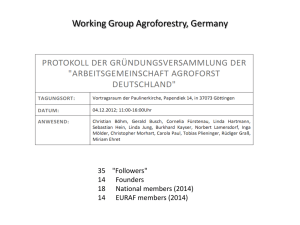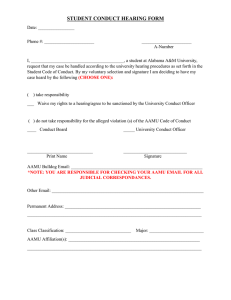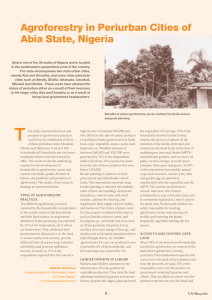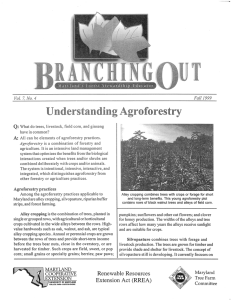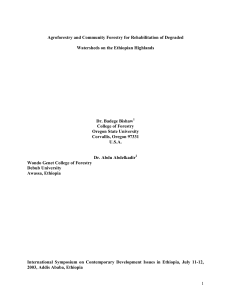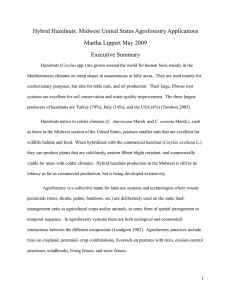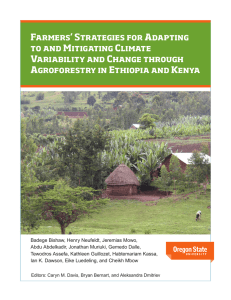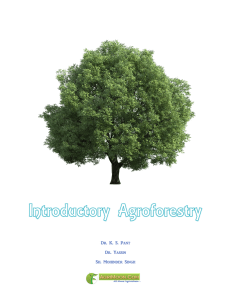Small Farms Research Center AGROFORESTRY
advertisement
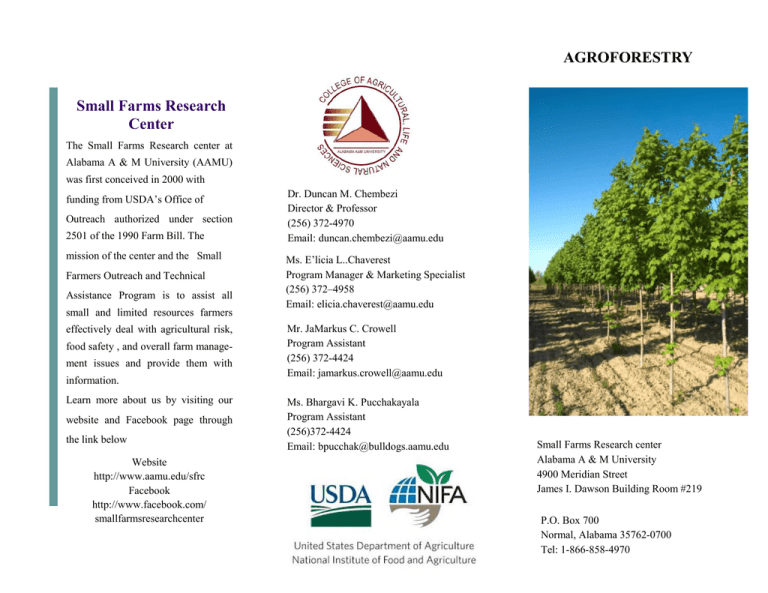
AGROFORESTRY Small Farms Research Center The Small Farms Research center at Alabama A & M University (AAMU) was first conceived in 2000 with funding from USDA’s Office of Outreach authorized under section 2501 of the 1990 Farm Bill. The mission of the center and the Small Farmers Outreach and Technical Assistance Program is to assist all small and limited resources farmers effectively deal with agricultural risk, food safety , and overall farm management issues and provide them with information. Learn more about us by visiting our website and Facebook page through the link below Website http://www.aamu.edu/sfrc Facebook http://www.facebook.com/ smallfarmsresearchcenter Dr. Duncan M. Chembezi Director & Professor (256) 372-4970 Email: duncan.chembezi@aamu.edu Ms. E’licia L..Chaverest Program Manager & Marketing Specialist (256) 372–4958 Email: elicia.chaverest@aamu.edu Mr. JaMarkus C. Crowell Program Assistant (256) 372-4424 Email: jamarkus.crowell@aamu.edu Ms. Bhargavi K. Pucchakayala Program Assistant (256)372-4424 Email: bpucchak@bulldogs.aamu.edu Small Farms Research center Alabama A & M University 4900 Meridian Street James I. Dawson Building Room #219 P.O. Box 700 Normal, Alabama 35762-0700 Tel: 1-866-858-4970 Agroforestry Agroforestry is an integrated system of rural land resources management based on combination of trees or shrubs with crop or livestock whose interactions generate economic, environmental and social benefits. Agroforestry products are divided into two major groups: Timber forest products, such as wood intended for construction, processing, and pulp and paper sector. Non timber forest products (NTFP’s) include: Food products: Includes mushrooms and ginseng. Manufactured products: Includes essential oils. Providing shade for vegetable or other crops that require or tolerate it. Long - term production of fuel and timber. Medium and long term production of fruits. Getting started with agroforestry systems: Things to be consider to make a decision: Further decisions are made by considering duration of the system If it is a temporary system: Before establishing system, soil erosion control, earthworks and gully maintenance are to be taken care. Depending up on system, spacing between the trees are decided. Select plants are annuals or short-lived perennials. If it is a permanent system: Depends upon local need, plan for permanent fruits and lumber trees. Depends upon trees the spacing is decided. Select crops that are used for soil protection and enrichment. Plan for shade tolerant crops that can be planted in shade areas. If it is a temporary and permanent system: Identify family and community needs Identify needs that could be met through agroforestry system Health and beauty products: drugs, shampoo and soaps. Identify potential benefits of agroforestry in your area Decorative and aesthetic products: Christmas trees and cones for crafts. Find the limiting constraints in agriculture, including marketing. Start the system on small scale. Measure input and output of the system. Environmental products: biogas and bio pesticides. Consider whether the people of the region are willing to adopt agroforestry system. Evaluate the benefits of the system. Horticultural products: shrubs, wild flowers and straw. Expand system cautiously. Things that are needed to design agro-forestry system: Benefits of Agroforestry Select the area. Improves soil health and water quality. Increase of total food production and salable products. Characterize the strengths and weakness of that area. Select trees, shrubs or grasses similar to the local area. Maintain minimum space requirements, between trees for intercropping. Increased efficiency in use of land. Long - term production of fuel and timber. For more information: http://www.usda.gov/wps/portal/usda/ usdahome?navid=agroforestry
